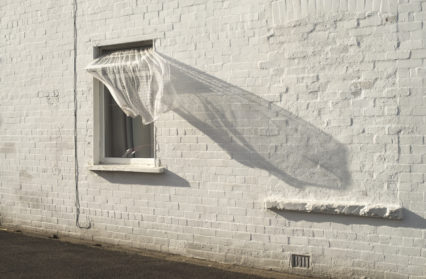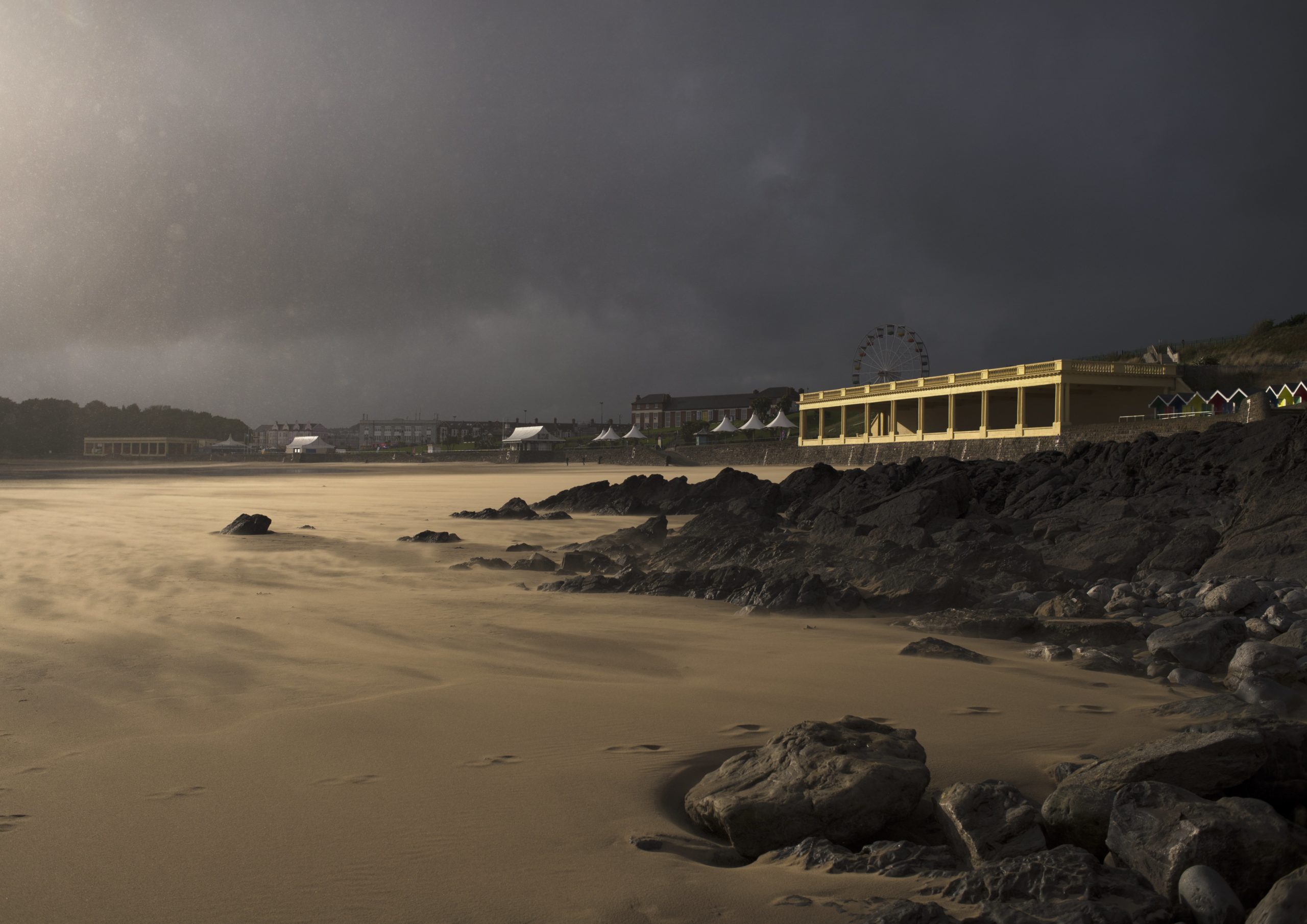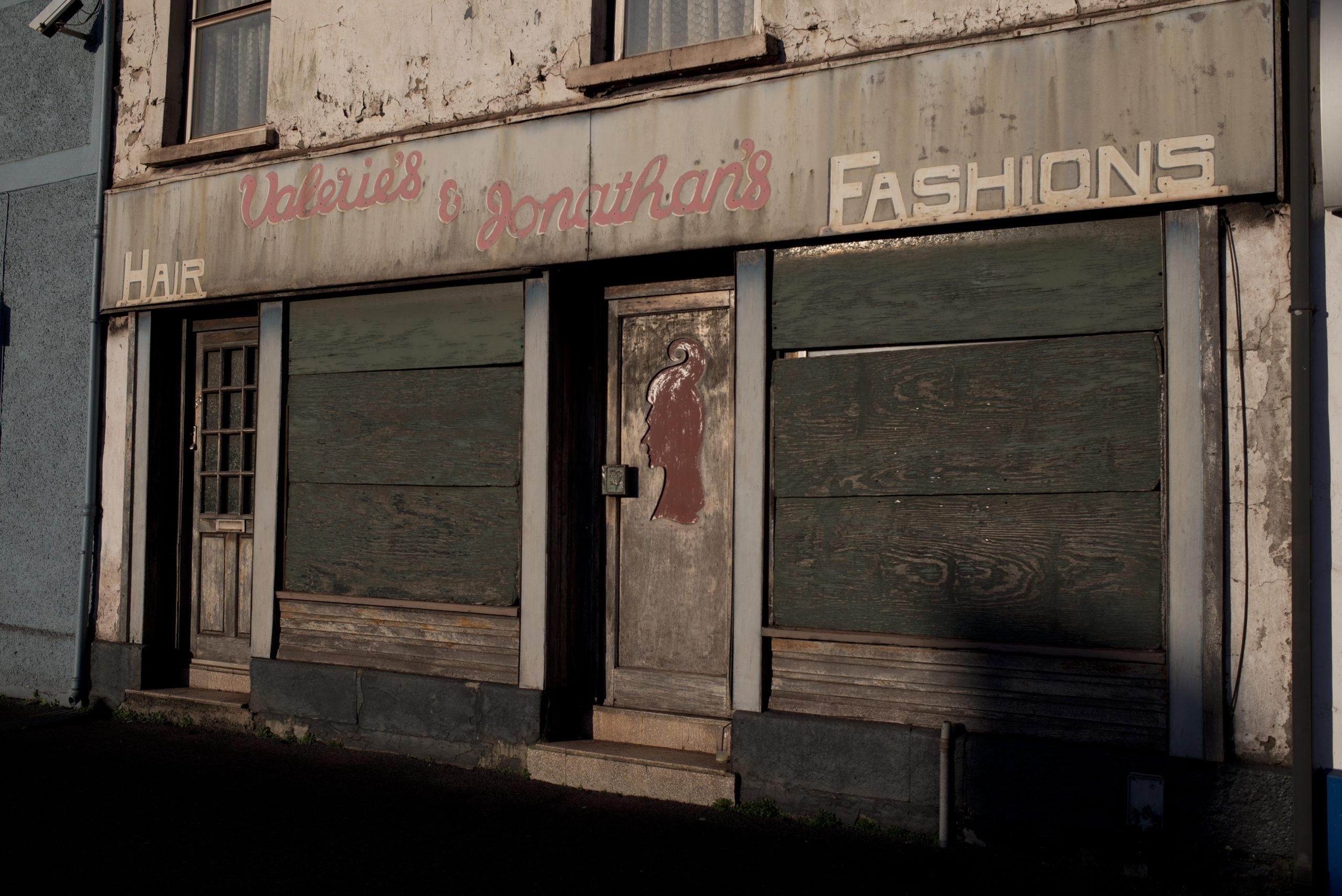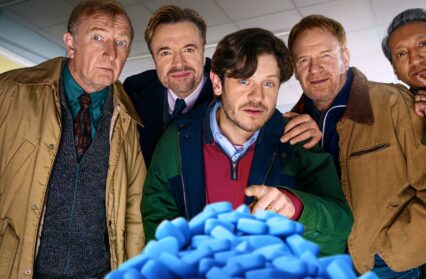Photographer Jon Pountney was in conversation with ffotogallery’s Mathew Talfan ahead of his exhibition, Waiting for the Light, at Chapter Arts Centre in Cardiff. Ben Woolhead was there for Wales Arts Review.
Patience is a virtue, as the saying goes – especially in photography. As is implied by the title of his current exhibition in Chapter, Waiting for the Light, Jon Pountney argues in conversation with ffotogallery’s Mathew Talfan that the trick is to spot a potential picture in advance and then be ready to press the shutter button when the composition of the elements or the climatic conditions are just right – rather like a hunter biding their time stealthily before seizing the opportune moment to capture their prey in a blur of action. Serendipity comes into it, of course – but by remaining patient you can help to make your own luck.
The tone for Waiting for the Light was set by two evocative photos: one of the pavilion at Whitmore Bay on Barry Island illuminated by a solitary sunbeam that Pountney had tracked sweeping across the deserted beach ahead of black rainclouds; the other of a net curtain billowing out of an open window in Treforest, which suggested to him a spirit escaping from the body. The latter, he reveals, demanded not waiting patiently but dashing home to fetch his camera and hoping that the window wasn’t shut in the meantime.
The inspiration for the series came from Paul Nash, primarily a painter but someone whose photography looked so closely and intently at the familiar that it was rendered surreal and alien, in much the same way that words tend to collapse into meaninglessness if repeated enough times. For his part, Pountney finds interest in flaking paint and rips in old mattresses, in the way that water has gathered on a paper bag discarded in the street – to the frequent bemusement/amusement of uncomprehending passers-by.
Disdainful of the rose-tinted nostalgia industry and horrified by the fact that pictures he took for the Cardiff Before Cardiff project only a decade ago already look dated, Pountney admits that in Waiting for the Light, at least, he actively sought to resist photography’s innate capacity to record the passage of time. The images are deliberately hard to date and so feel strangely out of time.
As with most of Pountney’s projects, many of the pictures were taken in the Valleys. Does this Englishman who has now lived and worked for more of his life in Wales feel like an insider or an outsider, Talfan asks? Both, Pountney replies – simultaneously part of the community and environment that he photographs and distinct from it, able to see the remarkable and beautiful in things to which others seem blind. He is particularly animated talking about his love of Wales’ taken-for-granted, often unpreserved post-industrial landscape and architecture, and of his concept of “horizontal archaeology”, by which he means the way in which you can simply walk around to discover the past rather than having to dig down.
While a joint Senedd/ffotogallery project photographing politically engaged Welsh teenagers took Pountney out of his comfort zone and proved to be a rewarding experience, he confesses to finding a current commission focused on charity shops more difficult “because it involves working with people”. He’s no curmudgeonly misanthrope, though – quite the opposite; his concern is not to appear patronising, to avoid producing what he calls “a Martin Parr pisstake”.
In addition to working on the commissions that pay the bills, Pountney has rediscovered the joy of doing things just for the fun of it. He took up painting again in 2018, enjoys practising technical exercises and has been illustrating a collection of M R James stories on a whim. It is only in the last five years, he admits, that he’s finally become confident in his own direction and identity as an artist. His formal education was useful primarily in alerting him to precisely the sort of work he didn’t want to do.
It did, however, also introduce him to the alchemy of the darkroom, the magic of watching an image develop, that he feels has been largely lost. Digital makes the process mechanical – and by extension the photographer too. Pountney has no interest in the technical side of photography – for him, a camera is merely a means of framing an image, and taking good pictures is not a matter of having the best kit but of having a keen eye. He uses digital post-production tools very sparingly, only in an attempt to get closer to “the truth” of what he saw – though he does also concede that that truth is inevitably often obscured or lost because the viewer brings their own perspectives to an image, finding meanings that are beyond the control of the artist.
Which brings us back to Waiting for the Light. Echoing playwright Gary Owen’s blurb for the exhibition, an audience member notes how remarkably unpopulated the pictures are, despite being of the built environment. The American photographer Walker Evans once said he liked to “suggest people sometimes by their absence” – a sentiment that Pountney seems to embrace. Keeping human figures out of the frame is a way of presenting truth but also retaining mystery, leaving things open to the viewer’s imagination.
Waiting for the Light is on at Chapter Arts Centre in Cardiff until March 1st.














